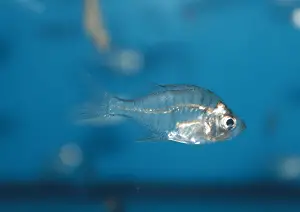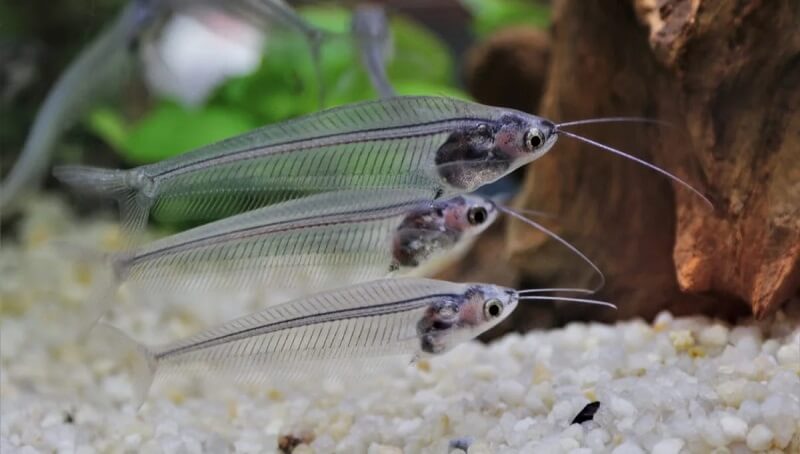You can’t argue the fact that nature is pretty weird. But can anything be weirder than a fish with a transparent body that gives you a look inside its working body?
Can you imagine a fish that has skin so thin, that you can actually see through its entire body up to the internal organs and bones? Although pretty unbelievable, there are in fact some species of fish with a body that is completely transparent. Studying the general features of these very weird species is pretty interesting. These types of fish are usually used in scientific studies that are related to the progression of diseases and the effects of specific medication on living organisms.
Types of Transparent Fish
The organisms that live inside our seas and vast oceans are very diverse and we are still far from knowing and understanding all of them. Although an organism might feature very unusual characteristics, scientists agree that most of the time, these are developed as a way of adapting to the surrounding environment. For example, as a way of camouflaging itself, the leafy sea dragon developed its popular leaf-like protrusions. Transparent fish have developed this feature as a way of camouflaging themselves.
You might also like my articles on the crowntail betta fish, the oscar fish, or the black piranha.
The Glass Catfish
The Glass catfish, also called the Kryptopterus bicirrhis, can be found in different tropical freshwater bodies. Most of the time, these small fish are sold to become part of the aquarium life. Adults won’t be more than 15 cm in length. They look great when they are in larger groups. They will only have one ray on their top fin, unlike other similar species. They will usually keep their top fin hidden and you won’t have an easy time trying to spot it.
Indian Glassy Fish
 This is another very popular freshwater fish that has a transparent body. It is known as the Indian glassy fish or the Parambassis ranga. It usually measures around 8 cm in length. This is one of the most-searched-for and desired fish species for aquariums. To make them even more interesting for people with aquariums, fish suppliers will even go as far as to color these fish with very vivid shades. They do this by injecting dye right into the creature’s body.
This is another very popular freshwater fish that has a transparent body. It is known as the Indian glassy fish or the Parambassis ranga. It usually measures around 8 cm in length. This is one of the most-searched-for and desired fish species for aquariums. To make them even more interesting for people with aquariums, fish suppliers will even go as far as to color these fish with very vivid shades. They do this by injecting dye right into the creature’s body.
When artificially painted, the Indian glassy fish will be called either a dyed fish or a disco fish. The bad part is that painted glassy fish will be more susceptible to disease, allergy, and shock, and the coloration on the body will only be temporary. This fish will have an average lifespan of around 3 to 4 years when in captivity and under the best environmental conditions.
The Barreleye Fish
Although the first barreleye fish was found around 1939, scientists were not able to find a lot of information about this fish up until 2004, when the first specimen was caught and analyzed. The analysis was made by the Monterey Bay Aquarium Research Institute, where special cameras were used to follow these fish. This dee-sea fish is also called Macropinna microstoma, and what sets it apart is that only its head is transparent, while the body is opaque, just like the body of any other fish.
Another very interesting feature of this fish, aside from its see-through head, is its tubular eyes, which are very sensitive to light. Its tubular, barrel-like eyes are why the fish is called a barreleye. They also have the ability to rotate their eyes inside a certain degree. They have a very delicate transparent, fluid-filled shield covering their head and eyes. Among its interesting features are also its large fins and its small mouth.
These are the most known and studied transparent fish breeds out there. The vast oceans and seas surely hold some other very interesting species that are bound to be discovered sooner or later and I will make sure to update this article or make a new one as soon as new species are found.




